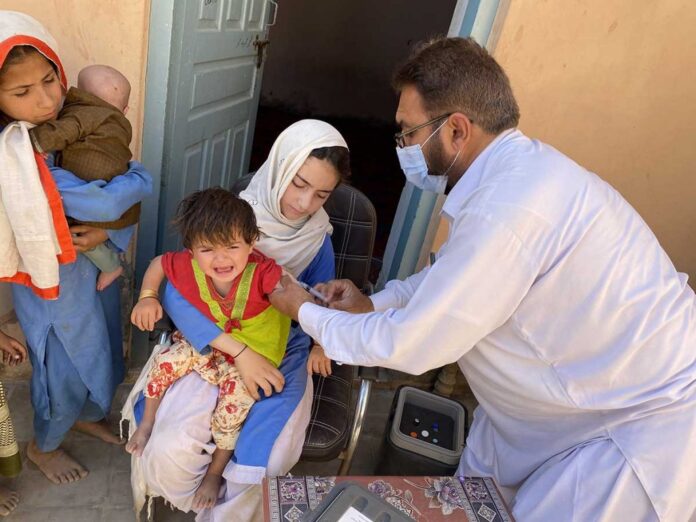Enteric fever remains a significant public health threat in Pakistan, exacerbated by antibiotic resistance, inadequate sanitation, and insufficient vaccine coverage.
Globally, around 9 million people are infected with typhoid each year, and the majority of cases are caused by drug-resistant strains. In Pakistan, disease surveillance reports millions of suspected typhoid cases annually, highlighting the country’s disproportionate burden.
Typhoid fever, caused by the bacterium Salmonella Typhi, is transmitted via the fecal-oral route and spreads through contaminated food, water, and close contact with infected individuals. The bacteria can be identified through blood culture testing during the first week of illness.
In 2018, Pakistan reported the highest incidence of typhoid among its neighboring countries, with an average of 493.5 cases per 100,000 people. From January to June 2023 alone, sentinel sites recorded 28,251 suspected cases of enteric fever, of which 21,000 (76%) tested positive for Salmonella Typhi through blood cultures. Despite this, only 24% of positive cases received the typhoid conjugate vaccine (TCV).
Pakistan also reports the worst rates of extensively drug-resistant (XDR) typhoid in South Asia, with over 15,000 cases officially documented. Alarmingly, research shows that 44% of typhoid cases in 2023 were XDR, which severely limits treatment options.
Healthcare providers in Pakistan often prescribe antibiotics like azithromycin and meropenem to suspected typhoid patients without performing blood culture tests for sensitivity. This practice, coupled with the widespread use of other antibiotics, has led to significant bacterial resistance.
Communities with inadequate access to clean water and proper sanitation are at the highest risk of typhoid outbreaks. A neglected sewage system often contaminates water supplies, further compounding the problem. In 2020, only 35.84% of Pakistan’s population had access to clean water near their homes, and contaminated water is linked to approximately 80% of diseases in the country.
Overcrowding, poor sanitation, and insufficient healthcare infrastructure create an environment where food and water become easily contaminated with feces-carrying the bacteria. Meanwhile, overuse of antibiotics has exacerbated the problem. Between 2000 and 2018, global antibiotic consumption rose by almost 50%, with South Asian countries like Pakistan experiencing the largest increases.
“XDR-typhoid is the final warning sign,” experts caution. “After this, we will face a stage where the superbug won’t respond to any drugs, taking us back to when typhoid was a deadlier disease.”
Pakistan lacks reliable data on deaths caused by enteric fever complications, such as septicemia. However, complication rates in South Asia are highest in Pakistan (4%), compared to Nepal (2.3%) and Bangladesh (0.6%).
While the authorities recognize the urgency of controlling typhoid outbreaks, their response has been insufficient to curb the disease’s spread. A comprehensive approach—centered on expanding vaccine coverage, improving sanitation, and regulating antibiotic use—is crucial to protecting public health and preventing a future where typhoid becomes untreatable.




